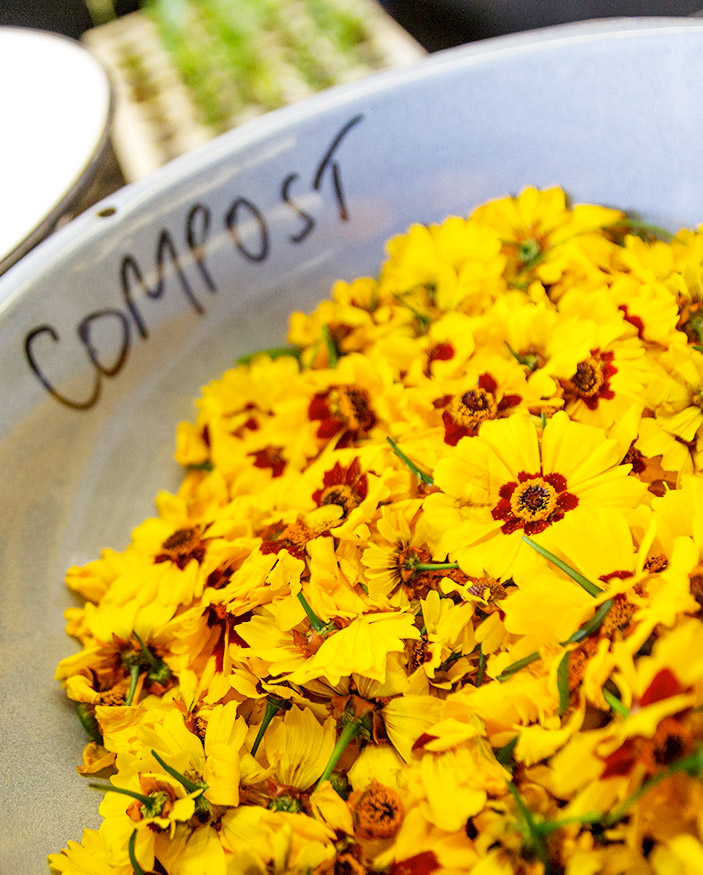Menu
Fabric to Fertilizer
and Plants to Dye

Textile waste accounts for approximately 6 percent of all municipal waste. Since population growth and consumption of textiles are closely intertwined, the problem of waste generation and disposal will only intensify over the coming decades. Novel approaches are needed for sustainability in the textile and clothing supply chain—from reducing pollution at the manufacturing stage to reducing post-consumer waste—in order to minimize stress on the environment.
At the manufacturing stage, natural colorants show promise in reducing pollution during the toxic dyeing process. On the other end of the spectrum, biodegradation (or composting) of textiles, instead of disposing of them in landfills, can potentially reduce textile waste. This project seeks to “Thread the Needle,” plotting a route between these two seemingly disparate solutions. Put simply, composted fabric waste can fertilize natural dye plants, thereby addressing both problems.



